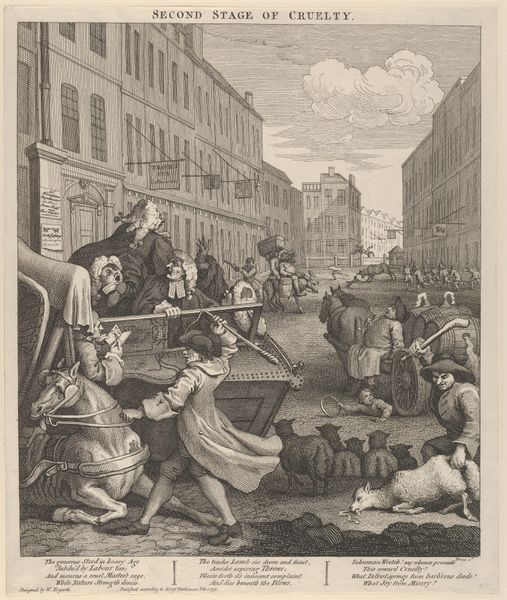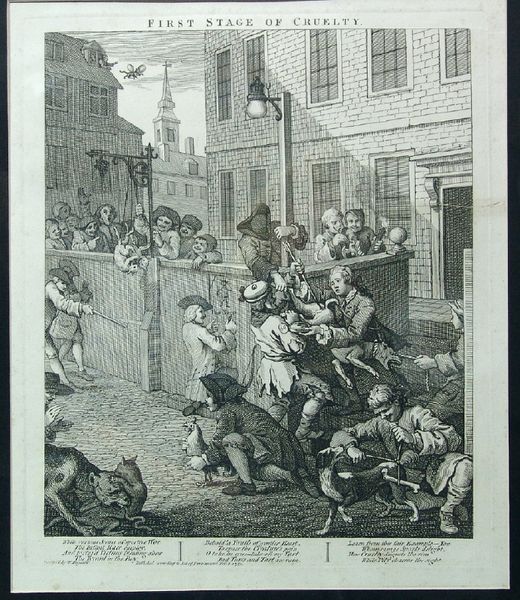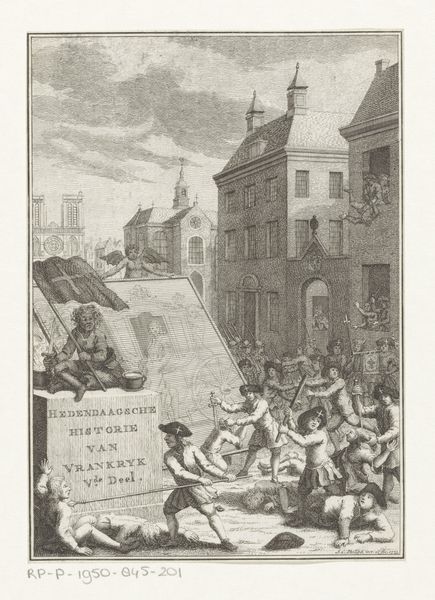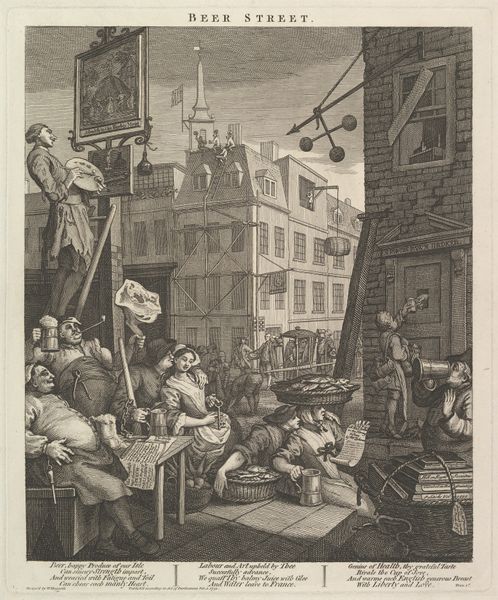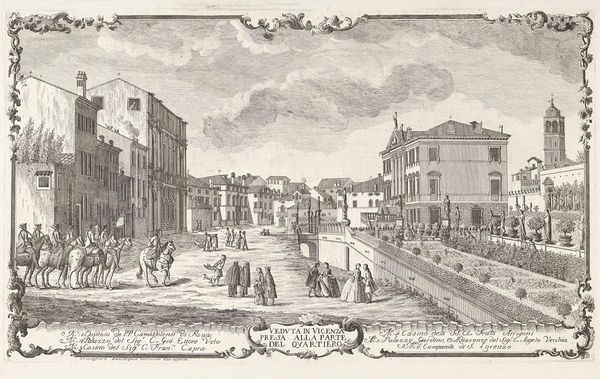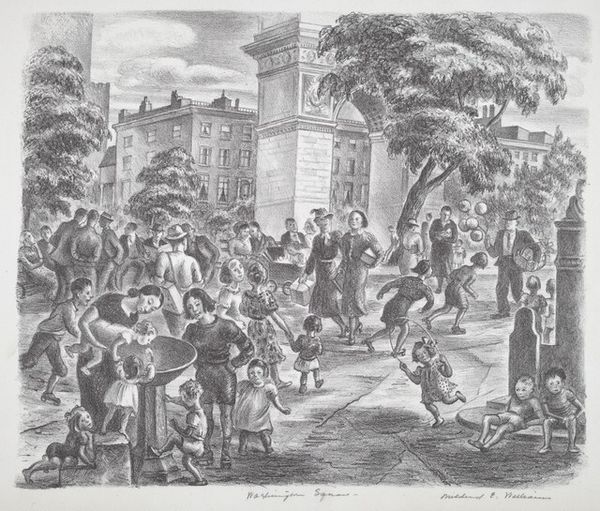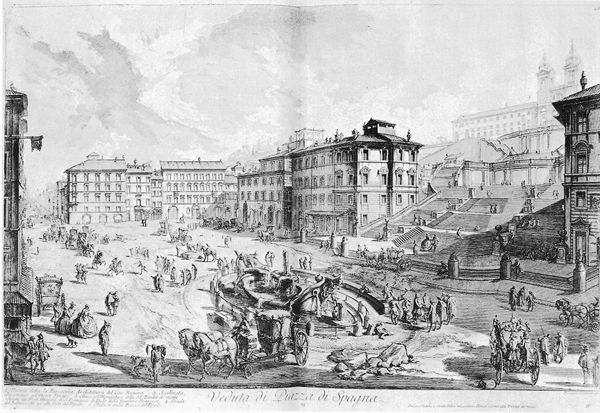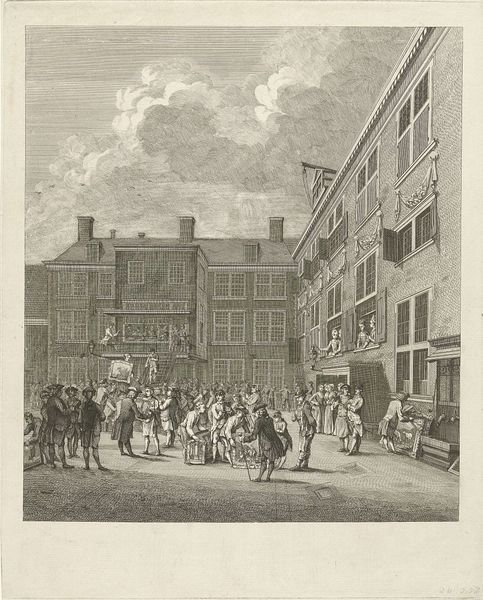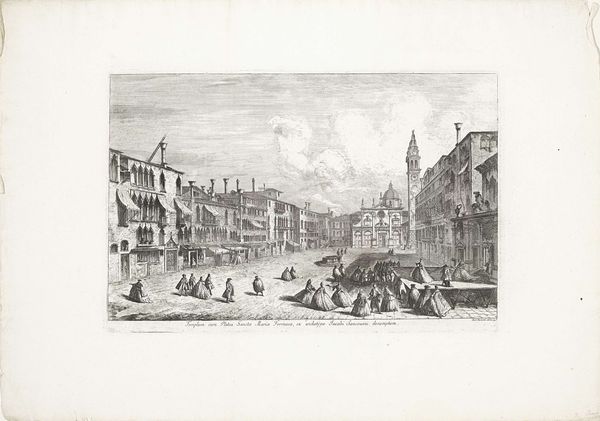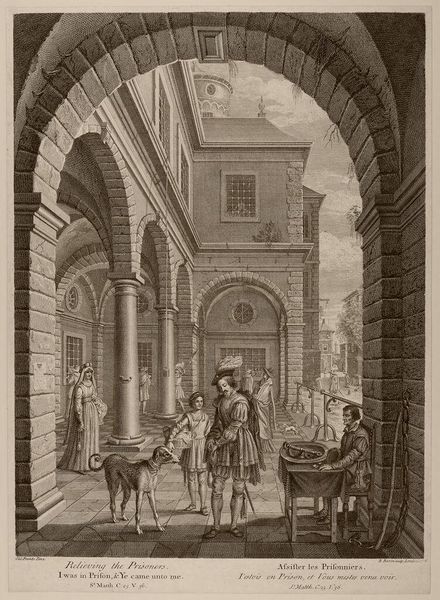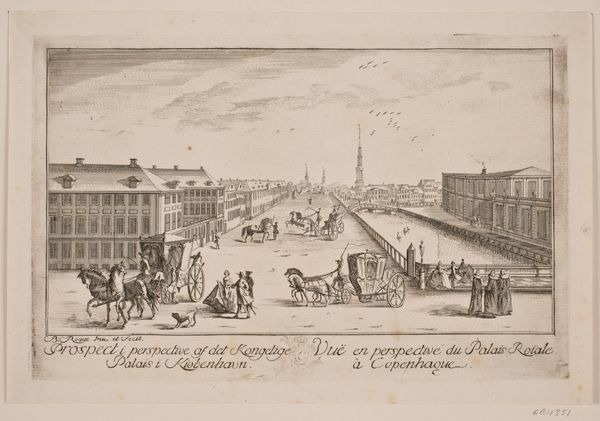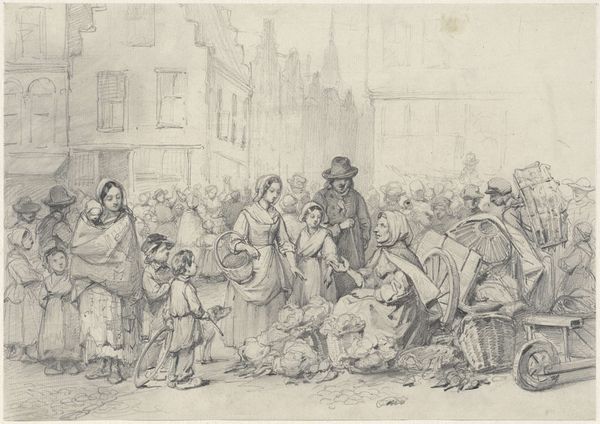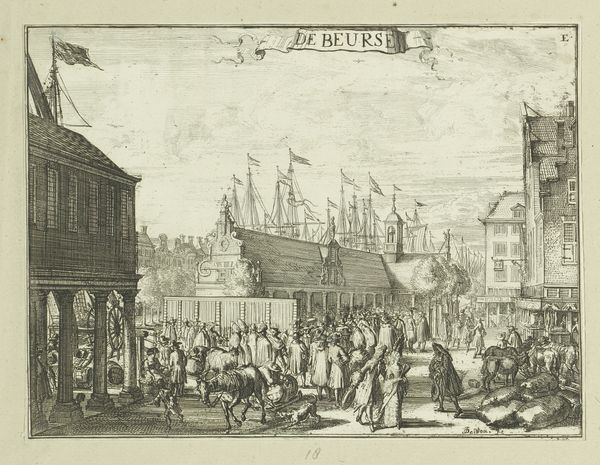
photography, engraving
#
allegories
#
allegory
#
narrative-art
#
photography
#
cityscape
#
genre-painting
#
history-painting
#
engraving
#
rococo
Copyright: Public domain
Curator: This is William Hogarth's engraving, "Second Stage of Cruelty," created in 1751. It’s a work laden with narrative and symbolic weight. Editor: My first impression is how starkly this image juxtaposes scenes of violence within the context of a bustling urban environment. It's quite unsettling. Curator: Indeed. Hogarth meticulously employs line and shadow to create a sense of depth and chaos, almost as if the scenes of brutality unfold right into the viewer’s space. Notice the dense concentration of activity toward the foreground that directs our eye. Editor: But who exactly is made to 'see', and for what end? Considering the era, this seems a pointed social commentary, a searing indictment against the abuse of animals but also power and social status. The man beating the horse is, visually, not different to those sitting in privilege and being carried around. Curator: Certainly, you highlight an important theme, as these cruelties become a reflection of the structures that perpetuate and uphold it. If you look, Hogarth’s decision to represent it through the graphic immediacy of an engraving reinforces its accessibility to a wider public, far beyond that of paintings displayed in aristocratic settings. Editor: And in this second stage of Hogarth’s series, we're no longer just witnessing individual acts. We are witnessing how violence becomes ingrained in the system, normalizing exploitation to benefit only a few, and it implicates all who benefit from such inequalities. Curator: Indeed, such systematic and calculated composition only sharpens the biting moral perspective present. It serves as a poignant reminder to dissect these patterns, particularly when analyzing artistic expression. Editor: Agreed, I will view this one for quite a while, this speaks volumes about social and economic disparity in current existence today as much as back then.
Comments
No comments
Be the first to comment and join the conversation on the ultimate creative platform.
